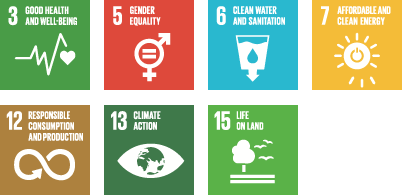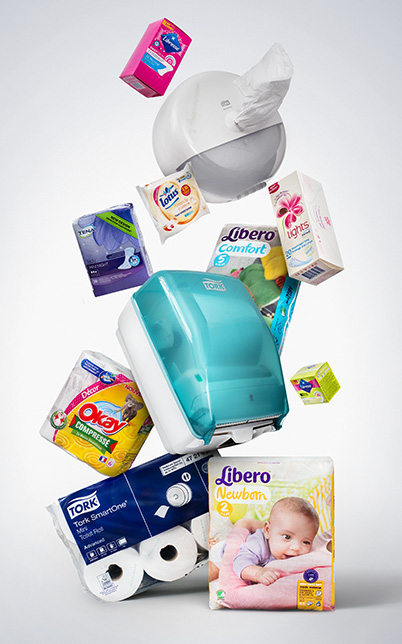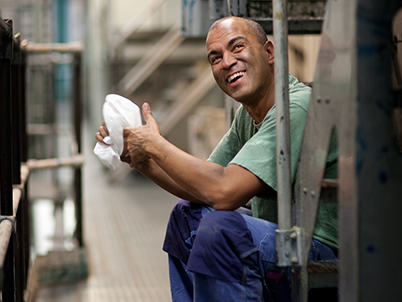How SCA creates value, today and in the future
SCA’s business operations are based on a sustainable business model with a focus on value creation for people and nature. The basis for our targets and our strategy is an insight into market trends and remaining receptive to the needs of our stakeholders.
1EXTERNAL TRENDS AND DRIVERS

Global macrotrends, from population growth and higher living standards to resource scarcity and climate change, have a major impact on SCA’s business operations. We have identified a number of macro-economic drivers that we believe are most relevant to our business. By analyzing our operating environment and these drivers, we can leverage opportunities and avoid the risks associated with them.

Ageing population

Growing middle class

Climate change

Scarce resources
2DIALOG WITH THE WORLD
Millions of people across the globe have an impact on, and an interest in, our business. We have to act in harmony with the society in which we operate in order to be relevant, and a continuous and responsive dialog with our stakeholders helps us understand the expectations on us as a company and how we can continuously develop and improve. It also helps us to understand the needs of our customers and consumers, build long-term relationships and to formulate and implement our business strategy.
Read more in chapter Stakeholder dialog


3OUR CROSSROADS

Our materiality analysis highlights the issues that are significant to SCA and our stakeholders. It forms the basis of SCA’s strategy and sustainability program. The analysis is based on a survey of 1,100 internal and external stakeholders.
Read more in chapter Materiality analysis


4A SUSTAINABLE BUSINESS STRATEGY CREATES VALUE

Large-scale sustainable solutions based on innovative, new thinking are needed if we are to leave a sustainable society behind for our children. We must leverage business opportunities and address the challenges that arise in a changing world in order to create real value for people and nature. SCA updated its strategic framework in 2016, keeping in mind future opportunities and challenges and based on the needs and expectations of stakeholders.
SCA’s new, purpose-driven vision is “Dedicated to improving well-being through leading hygiene and health solutions”. The updated framework also includes the following three new Group objectives: “Enable more people every day to enjoy a fuller life”, “Contribute to a sustainable and circular society” and “Enable our employees to realize their full potential, as part of one winning team”.
Sustainability has been an integral part of our strategy and business model for many years and this is even clearer in the updated strategy with the new Group objectives. The objective to “Generate increased shareholder value through profitable growth” has been retained, with growth in the hygiene area being an important part of SCA’s financial value creation.
However, SCA not only creates value for its shareholders. The objective to “Enable more people every day to enjoy a fuller life” shows how we, through our hygiene and health solutions, create value for customers and consumers. The objective to “Contribute to a sustainable and circular society” includes how we want to minimize our environmental impact and develop products and services that function in a circular society and to “Enable our employees to realize their full potential, as part of one winning team” includes programs for current and potential employees.
The strategy is based on a number of international regulatory frameworks and guidelines that will be highly significant for the business community in the future. SCA supports the United Nations’ 17 Sustainable Development Goals and we want our business operations to contribute to the goals. The goals that we have defined as most relevant for our operations are:
No. 3 Good health and well-being – we provide access to innovative solutions and educate and provide information to millions of people about hygiene and health. Business value is also created by meeting societal needs. This offers more people an opportunity to work, better conditions to provide for their families and increased well-being.
No. 5 Gender equality – we are breaking the taboos surrounding subjects such as menstruation and incontinence and offer women, girls and family carers an opportunity to fully participate in society. A key role is played by our Hygiene Matters initiative.
No. 6 Clean water and sanitation – access to sustainable hygiene solutions. Every day, about 1,000 children under the age of five die from diarrhea caused by insuffi cient access to water, sanitation and hygiene.
No. 12 Sustainable consumption and production – we work with resource efficiency, design our products for a circular society and develop sustainable models to manage waste.
VISION
Dedicated to improving well-being through leading hygiene and health solutions
LONG-TERM OBJECTIVES
Generate increased shareholder value through profitable growth
Enable more people every day to enjoy a fuller life
Contribute to a sustainable and circular society
Enable our employees to realize their full potential as part of one winning team
FINANCIAL TARGETS
-
Organic sales growth
-
Return on capital employed
-
Capital structure
PEOPLE AND NATURE TARGETS
-
Hygiene solutions
-
People innovations
-
Nature innovations
-
Climate and energy
-
Fiber and biodiversity
-
Water
-
Employee health and safety
-
Code of Conduct
No. 7 Clean energy and no. 13 Climate action – we work to reduce climate impact in the entire supply chain and guarantee the origin of the wood fiber we use. We invest in renewable energy, including wind power and biofuel.
No. 15 Life on land – we conduct responsible forest management and preserve biodiversity in our forests.
A reduction in greenhouse gas emissions to the levels that researchers believe necessary will require an extensive shift to clean, energy-efficient technology and companies that lead this field will benefit most. The agreement by the international community to limit global warming to well below 1.5 degrees at the COP 21 meeting in Paris in 2015 provides guidance on the issue. The European Commission’s action plan for a circular economy has influenced us when we developed our objective for a circular society.
